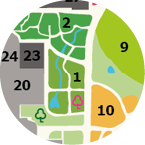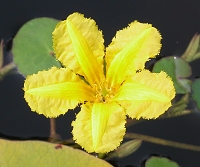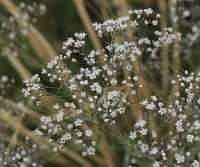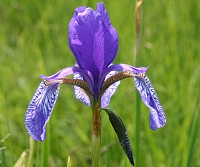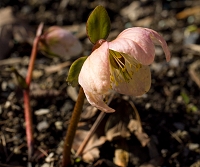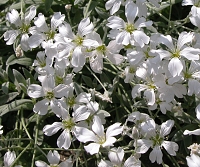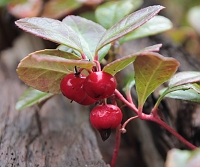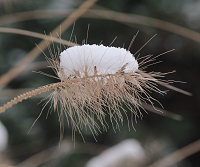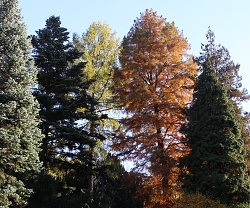Botanical Garden
Charles University Science Faculty
Outdoor collections
The external exhibitions are the basis of the Botanical Gardens. They contain about 3 000 kinds of plants transferred from1904 from their original Central European sites. Having come directly from their natural habitat, they represent a unique collection of genetic resources. The most important and ecologically defined exhibitions are discussed in separate sections below.

Central Europaean flora
The Central European flora is a basic outdoor exhibition started at the same time as the Gardens and continuously updated. The rockery section was built of limestone imported from the Czech Karst (hence the informal name Karlštejn, after the famous castle built of the same rock) with romantic cave, today covered in ivy. It is divided into the steep limestone relief slope and a flat shaded grove, dominated by the Pterocarya fraxinifolia which is among the oldest trees in the Gardens; a stream flows through both parts terminating in a pond. Because of these conditions Central European plants from the following habitats can grow:
- thermophilic rocky steppes
- mountain limestone rocks
- oak-hornbeam woodlands
- floodplain forests
- stagnant and slow flowing waters.
The exhibition contains about 1 100 kinds of plants from the Czech and Slovak Republics. Visitors can become familiar with conventional central European species and critically endangered and endemic species. Notable among these are the Austrian dragon’s head Dracocephalum austriacum, stool iris Iris aphylla, alpine aster Aster alpinus, the endemic Carpathian bellflower Campanula carpatica, or in spring carpets of the sub-Mediterranean greater pasque flower Pulsatilla grandis. In the floodplain section one can see the eastern Carpathian species henbane bell Scopolii carniolica, and an interesting collection of sub-Mediterranean and continental sweet peas (Lathyrus venetus, L. heterophyllus, L. pisiformis).

Aquatic and wetland plants
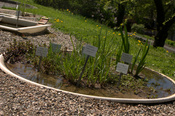
The exhbition on the Gardens’ second terrace was newly built in the years 2002–2003 based on an architectural design by Ing. Martin Severin; it replaced an exhibition which closed in the 1980s. Despite the short timespan, about 100 taxa have already been collected here. The display is based on a combination of ecological and taxonomical criteria. Primarily the plants are in separate pools (water plants) and bowls (swamp plants) arranged environmentally – eg. littoral plants, plants from exposed pond beds, moorland plants, etc. When appropriate they are collected into a single exhibition of taxonomically related species of sedges (Carex), rushes (Juncus) and cattails (Typha). The most interesting domestic species include marsh angelica (Ostericum palustre), a small water lily (Nuphar pumila), the fringed Nymphoides peltata or the cattail Typha minima, and of species not normally growing in this country, the prominently flowering primrose willow Ludwigia peploides is of interest. As the newest exhibition area it is frequently supplemented by collections from the field.

Sandbar plants
This environmentally defined exhibition of plants typical of light sandy soil contains both plants widely seen in these habitats (bracken - Pteridium aquilinum, heather - Calluna vulgaris) and rare plants especially from the Pannonian sands: Ephedra distachya, also Carex liparicarpos, scented grass Chrysopogon gryllus, yarrow Achillea pectinata; Atlantic sandbar species are represented by, for example, the sedge Carex ericetorum or species of cottonweed from the Filago genus.

Plants from peat bogs and fens
This exhibition area has plants mainly from peat bogs but also from fens. Examples from the fens are the leopard plant Ligularia sibirica, Iris sibirica or, virtually extinct in the Czech Republic, the horsetail Equisetum variegatum. Peat bog species grown here are the bilberry Vaccinium uliginosum, marsh cinquefoil Potentilla palustris and the rare crowberry Empetrum nigrum.

Useful plants
These are located on the first terrace. Approximately 100 perennial, annual and biennial species are under cultivation. Emphasis is placed on three groups of plants: (a) examples of common and exotic vegetables (tomatoes, celery, artichoke), (b) aromatic plants, especially Mediterranean plants of the Lamiaceae family (e.g. balm, hyssop, peppermint, lavender) and Asteraceae (Cnicus benedictus, Silybum marianum), (c) examples of medicinal plants from our domestic flora (celandine, strawberries, agrimony, soapwort). Many of the aromatic plants are listed in the second category, but are also used medicinally. Some poisonous plants (henbane, Solomon’s seal) are also represented. The exhibition is partially renewed annually by the planting of short-lived species.

Ericaceous marshland exhibition
The ericaceous plant group requiring acidic peaty soil is complemented by other plants with similar ecological requirements. From the Ericaceae family we can find species seen in the Czech Republic such as Ledum palustre, Andromeda polifolia, Oxycoccus palustris, or more exotic representatives – the North American species of wintergreen Gaultheria procumbens or the Atlantic species Daboecia cantabrica. The second group is our common fern – male and female ferns, common ferns. The dominant tree in the exhibition is the dwarf pine (Pinus mugo).

The shady rock garden
This is partly overgrown with ivy and is undergoing reconstruction and planting. But some attractive flowering plants can be found here in every season: in spring e.g. candytuft (Iberis sempervirens), barrenwort (Epimedium) or false Solomon’s seal (Smilacina). Later in the year major European relicts and endemic plants of the gesneria family such as Haberlea rhodopensis and Ramonda pyrenaica can be seen, or some hosta (Hosta), which have beautiful leaves for most of the year. Also visible is the royal fern (Osmunda regalis), native to western Europe, which is especially interesting because on the phylogenetic “tree of life” it is positioned on an isolated branch, quite apart from most of the other fern species. Woody plants are mostly native or commonly grown conifers and ornamental shrubs, the year-round enchanting Japanese hiba arborvitae (Thujopsis dolabrata), in spring at the bottom of the path is the redvein enkianthus Enkianthus campanulatus an East Asian species of the Ericaceae family.

Mediterranean rock garden
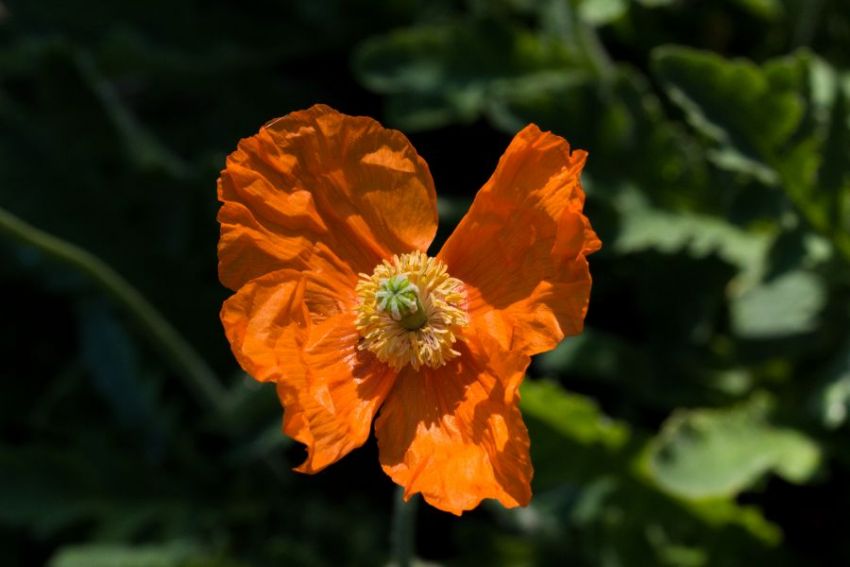
Currently, this area is not very rich in species as it is under reconstruction. Nevertheless, all year round the visitor can come across striking flowering and typical Euro-Mediterranean species, such as rue (Ruta graveolens), lavender thyme (Lavandula angustifolia), spiny bear’s breeches (Acanthus spinosus), a prominent representative of the typical Mediterranean cistaceae family, poplar-leaved cistus (Cistus populifolius), monocots such as the bulbous asphodel Asphodeline lutea. Of species-rich genera one can find the rock rose (Helianthemum), St. John’s wort (Hypericum) or poppies (Papaver). At the upper end, the rock garden is bordered by the attractive smoke tree bush (Cotinus coggygria).

Conifer collection
This is located at the bottom of the garden opposite the Central European flora exhibition. The dominant feature is a huge specimen of a bald cyprus (Taxodium distichum), in the foreground by the path is the shrubby cow’s tail pine (Cephalotaxus harringtonii). There are many species of fir (e.g. Abies concolor, A. koreana), false cypresses (Chamaecyparis nootkatensis, Ch. pisifera) and thuja (Thuja occidentalis, T. plicata).
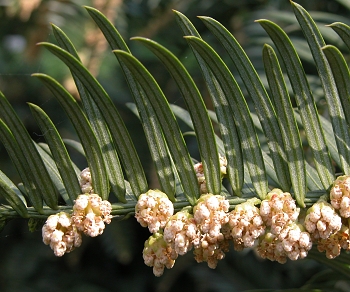
The monkey puzzle tree (Araucaria) is grown outdoors in this area, acting as winter cover, and the Himalayan cedar (Cedrus deodara) has been recently planted. In summer, this collection is augmented by the subtropical coniferous collection, which overwinters in the subtropical cold greenhouse.
| Web is using Google Analytics, see privacy policy. |
Powered by Drupal
|



